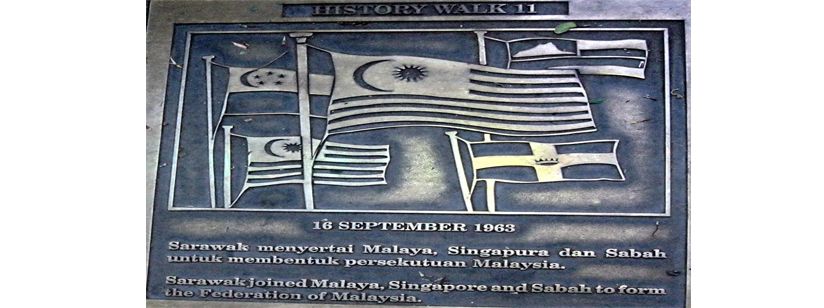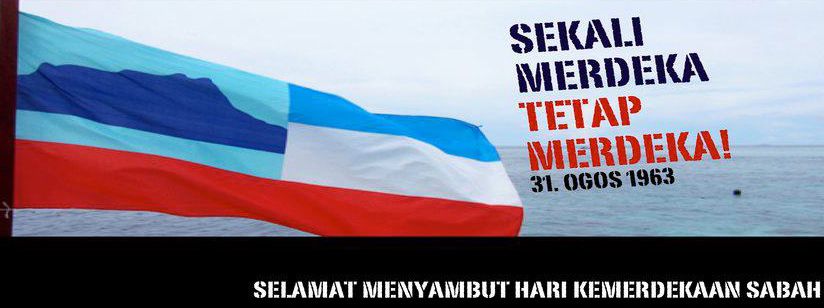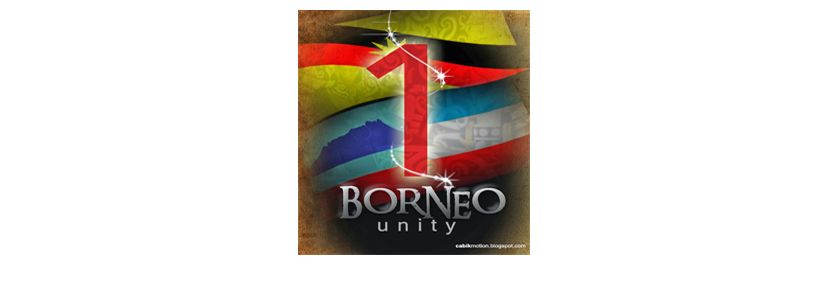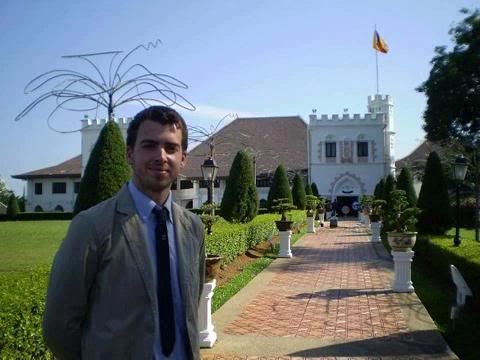In February 1855 whilst staying in a small house in Sarawak, Borneo, Wallace wrote what was probably the most important paper on evolution prior to the discovery of natural selection. Wallace's "Sarawak Law " paper made such an impression on the famous geologist Charles Lyell that in November 1855, soon after reading it, he started writing his "species notebook" in which he began to contemplate the implications of evolutionary change. In April 1856 Lyell paid a visit to Darwin at Down House, and Darwin explained his theory of natural selection to Lyell for the first time: a theory which Darwin had been working on, more or less in secret, for about 20 years. Soon afterwards Lyell sent a letter to Darwin urging him to publish the theory lest someone beat him to it (he probably had Wallace in mind!) and in May 1856 Darwin heeding this advice, began to write a "sketch" of his ideas for publication. This "sketch" was abandoned in about October 1856 and Darwin instead began to write an extensive book about evolution.
In February 1858 Wallace was suffering from an attack of fever in the village of Dodinga on the remote Indonesian island of Halmahera when suddenly the idea of natural selection as the mechanism of evolutionary change occurred to him. As soon as he had sufficient strength he wrote an detailed essay explaining his theory and sent it together with a covering letter to Charles Darwin, who he knew from correspondence was interested in the subject of evolution. He asked Darwin to pass the essay on to Charles Lyell if Darwin thought it was sufficiently interesting:- no doubt hoping that Lyell would help to ensure that it was published in a good journal. Lyell (who Wallace had never corresponded with) was one of the most respected scientists of the time and Wallace must have thought that he would be interested in reading his new theory because it explained the "laws" which Wallace had proposed in his "Sarawak Law" paper. Darwin had mentioned in a letter to Wallace that Lyell had found Wallace's 1855 paper noteworthy.
Unbeknownst to Wallace, Darwin had of course discovered natural selection many years earlier. He was therefore horrified when he received Wallace's letter and immediately appealed to his influential friends Lyell and Joseph Hooker for advice on what to do. Lyell and Hooker decided to present Wallace's essay (without first asking his permission!), along with two unpublished excerpts from Darwin's writings on the subject, to a meeting of the Linnean Society of London on 1 July 1858. These documents were published together in the Society's journal on 20 August of the same year as the paper "On the Tendency of Species to Form Varieties; And On the Perpetuation of Varieties and Species by Natural Means of Selection". Darwin's contributions were placed before Wallace's essay, thus emphasising Darwin's priority to the idea. Wallace later remarked that the paper "was printed without my knowledge, and of course without any correction of proofs", contradicting Lyell and Hooker's statement in their introduction to the joint papers that "both authors...[have]...unreservedly placed their papers in our hands". This unfortunate event prompted Darwin to abandon writing his big book on evolution and instead produce an "abstract" of what he had written up until that point. This "abstract" was published fifteen months later in November 1859 as his famous book On the Origin of Species.
Wallace's discovery of natural selection occurred almost at the midpoint of his stay in the Malay Archipelago. He was to remain there four more years, and by the end of his trip (and for the rest of his life) he was known as the greatest living authority on the region. He was especially known for his studies on its zoogeography, including his discovery and description of the faunal discontinuity that now bears his name. The "Wallace Line," extends between the islands of Bali and Lombok and Borneo and Sulawesi, and marks the limits of eastern extent of many Asian animal species and, conversely, the limits of western extent of many Australasian animals.
Wallace returned to England in 1862 and in the spring of 1866 he married Annie, the twenty-year-old daughter of his friend the botanist William Mitten. Two of their children, Violet and William, survived to adulthood (a third died in infancy).
Wallace spent the rest of his long life popularising the theory of natural selection and working on a very wide variety of other subjects. He wrote more than 700 articles and 22 books, the best known being The Malay Archipelago, The Geographical Distribution of Animals, and Darwinism. Honours awarded for the many important contributions he made to biology, geography, geology and anthropology include: the Gold Medal (Société de Géographie); the Founder's Medal (Royal Geographical Society); the Darwin-Wallace and Linnean Gold Medals (Linnean Society); the Copley, Darwin and Royal Medals (Royal Society); and the Order of Merit (the greatest honor that can be given to a civilian by the ruling British monarch).
By the turn of the century, Wallace was very probably Britain's best known naturalist and by the end of his life, he may well have been one of the world's most famous people. He remained active into his ninety-first year but slowly weakened in his final months. He died in his sleep at Broadstone on 7 November 1913, and three days later he was buried in a public cemetery nearby. On the 1st November 1915 a medallion bearing his name was placed in Westminster Abbey.













































